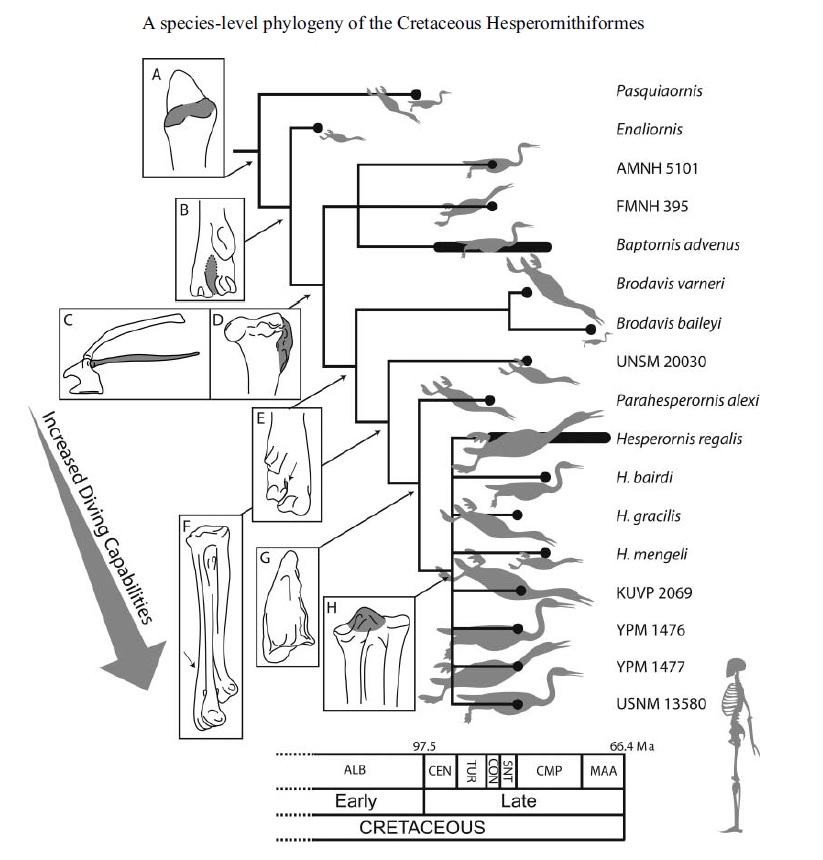A new study of some Hesperornithiform bird fossils from the Cretaceous shows how several separate lineages evolved adaptations for diving. They began to go fishing.
Living at the same time as the dinosaurs, Hesperornithiform
has been found in North America, Europe and Asia in 65–95 million years old rocks. Dr. Alyssa Bell and Professor Luis Chiappe of the Dinosaur Institute, Natural History Museum of Los Angeles County, undertook a detailed analysis of their evolution, showing that separate lineages became progressively more adept at diving into water to catch fishes, like modern day loons and grebes.
The Hesperornithiformes are a highly derived but very understudied group of primitive birds from the Cretaceous period. This study is the first comprehensive phylogenetic analysis, or evaluation of evolutionary relationships, to ever be undertaken on the entire group.

Evolution of diving specializations within the Hesperornithiformes.
DOI:10.1080/14772019.2015.1036141
The results of this study confirm that the Hesperornithiformes do form a single group (or clade), but that within this group the inter-relationships of the different taxa are more complex than previously thought. Additionally, this study finds that anatomical changes were accompanied by enlargement in overall body size, which increased lung capacity and allowed deeper diving.
Overall, this study provides evidence for understanding the evolution of diving adaptations among the earliest known aquatic birds.
Citation: Alyssa Bell, Luis M. Chiappe, “A species-level phylogeny of the Cretaceous Hesperornithiformes (Aves: Ornithuromorpha): implications for body size evolution amongst the earliest diving birds”, Journal of Systematic Palaeontology, 2015, DOI:10.1080/14772019.2015.1036141


